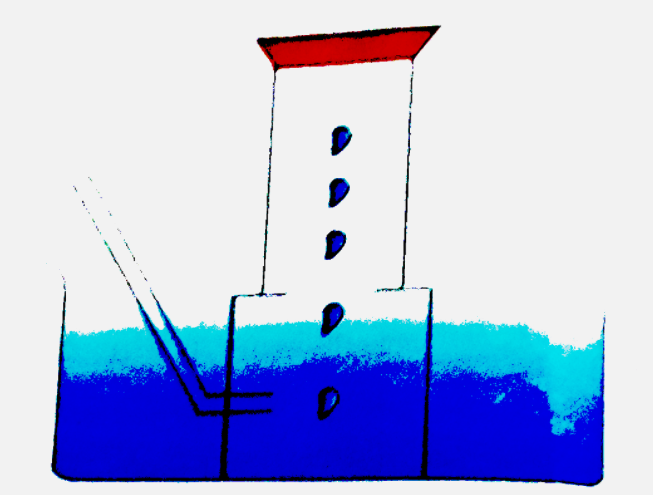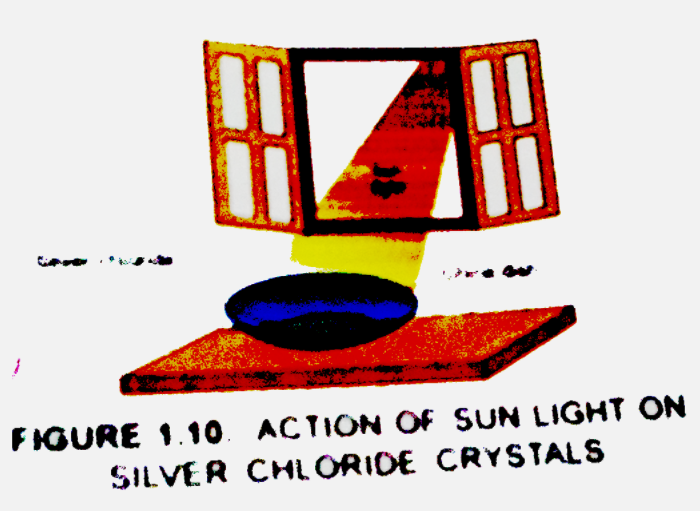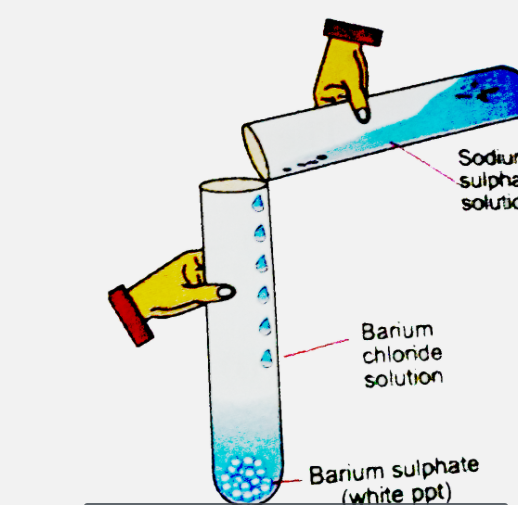Long Answer Questions from S DINESH & CO CHEMISTRY Chapter 3 CHEMICAL REACTIONS AND EQUATIONS for Class 10
| Class 10 | CHEMISTRY |
| Chapter | CHEMICAL REACTIONS AND EQUATIONS |
| S DINESH & CO CHEMISTRY | Long Answer Questions |
| Medium | English |
| Academic Year | 2023-2024 |
Question 1
(a) Why cannot a chemical change be normally reversed ?
(b) Why is it always essential to balance a chemical equation ?
(c) Why do diamond and graphite, the two allotropic forms of carbon evolve different amounts of heat on combustion ?
(d) Can rusting of iron take place in distilled water ?View SolutionQuestion 2
You are given the following materials :
(i)Iron nails(ii)Copper sulphate solution(iii)Barium chloride solution(iv)Copper powder(v)Ferrous sulphate crystals(vi)Quick lime
Identify the type of chemical reaction taking place when :
(a) Barium chloride solution is mixed with copper sulphate solution and a white precipitate is observed.
(b) On heating, copper powder in air in a china dish, the surface of copper powder becomes black.
(c) On heating green ferrous sulphate crystals, reddish brown solid is left and a gas having smell of burning sulphur is noticed.
(d) Iron nails when left dipped in blue copper sulphate solution becomes brownish in colour and blue colour of copper sulphate solution fades away.View SolutionQuestion 3
A silver-white metal X taken in the form of ribbon, when ignited, burns in air with a dizzling white flame to form a white powder Y. When is added to powder Y, it dissolves partially to from another substance Z.
(a) What could metal X be ?
(b) What is powder Y ?
(c ) With which substance metal X combines to form powder Y ?
(d) What is substance Z ? Name one domestic use of substance Z.
(e) Write a balanced chemical equation of the reaction which takes place when metal X burns in air to form powder Y. View SolutionQuestion 4
(i) Account for the following :
(a) White silver chloride turns grey in sunlight.
(b) Brown coloured copper powder on heating in air turns into black coloured substance.
(ii) What do you mean by
(a) Displacement reaction (b) Reduction reaction (c) Combination reaction ? Write balanced chemical equation.View SolutionQuestion 5
(a) Write the chemical equation in the balanced form.
Fe(s)+H2O(g)→Fe3O4(s)+H2(g)
(b) Identify the type of reaction from the equation given below :
Na2SO4(aq)+BaCl2(aq)→BaSO4(s)+NaCI(aq)
(c) You could have noted that when copper powder is heated in a china dish, the surface of copper powder gets coated with black coloured substance.
(i) Why is this black coloured substance formed ? (ii) What is this black substance ?
(iii) Write the chemical equation of the reaction taking place.View SolutionQuestion 7
Select (i) combination reactions (ii) decomposition reactions and displacement reactions from the following
(i) ZnCO3(s)→ZnO(s)+CO2(g)
(ii) Pb(s)+CuCl2(aq)→PbCl2(g)+Cu(s)
(iii) H2(g)+Cl2(g)→2HCl(g)
(iv) Fe2O3(s)+2Al(s)→Al2O3(s)+2Fe(s)
(v) 3H2(g)+N2(g)→2NH3(g)
(vi) CaCO3(g)heat−−→CaCO3(g)+CO2(g)View SolutionQuestion 8
In the schematic diagram for the preparation of hydrogen gas as shown in figure, what would happen if following changes are made ?
(a) In place of zinc granules, same amount of zinc dust is taken in the test tube.
(b) Instead of dilute sulphuric acid, dilute hydrochloric acid is taken.
(c) Sodium hydroxide is taken in place of dilute sulphuric acid and the tube is heated.
 View Solution
View SolutionQuestion 9
A metal is treated with dil. H2SO4. The gas evolved is collected by the method shown in the figure. Answer the following :
(i) Name the gas.
(ii) Name the method of collection of the gas.
(iii) Is the gas soluble of insoluble in water ?
(iv) Is the gas lighter or heavier than air ?
 View Solution
View SolutionQuestion 10
A brown substance 'X' on heating in air forms a substance 'Y'. When hydrogen gas is passed over heated 'Y', it again changes back into 'X'.
(i) Name the substances X and Y.
(ii) Name the chemical processes occurring during both the changes.
(iii) Write the chemical equations.View SolutionQuestion 11
(a) The given diagram displays a chemical reaction. Observe carefully and answer the following questions :
(b) Identify the type of chemical reaction that will place and define it. How will the colour of the salt change ?
(c) Write the chemical equation of the reaction that takes place.
(d) Mention one commercial use of this salt.
 View Solution
View SolutionQuestion 13
(a) Why is it necessary to balance a chemical equation ?
(b) Write the balanced chemical equations for the following reactions :
(i) Natural gas burns in air and combines with oxygen to form carbon dioxide and water.
(ii) During respiration, glucose combines with oxygen and forms carbon dioxide and water along with the release of energy.View SolutionQuestion 16
Identify the type of chemical reaction in the following statements and define each of them :
(i) Digestion of food in our body
(ii) Rusting of iron
(iii) Heating of manganese dioxide with aluminium powder
(iv) Blue colour of copper sulphate solution disappears when iron filings are added to it.
(v) Dilute hydrochloric acid is added to sodium hydroxide solution to form sodium chloride and water.View SolutionQuestion 17
Write balanced chemical equations for the following statements :
(i) NaOH solution is heated with zinc granules
(ii) Excess of carbon dioxide gas is passed through lime water
(iii) Dilute sulphuric acid reacts with sodium carbonate
(iv) Egg shells are dropped in hydrochloric acid
(v) Copper (II) oxide reacts with dilute hydrochloric acid.View SolutionQuestion 20
On adding a drop of barium chloride solution to an aqueous solution of sodium sulphite, white precipitate is obtained :
(a) Write a balanced chemical equation for the reaction involved.
(b) What other name can be given to this precipitation reaction
(c) On adding dilute hydrochloric acid to the reaction mixture, white precipitate disappears. Why ?View SolutionQuestion 24
(a) Why are decomposition reactions called the opposite of combination reactions ? Explain with equations of these reactions.
(b) Express the following facts in the form of a balanced chemical equation:
"When a strip of copper metal is placed in a solution of silver nitrate, metallic silver is precipitated and a solution containing copper nitrate is formed"View SolutionQuestion 25
On heating blue coloured powder of copper (II) nitrate in a boiling tube, copper oxide (Black), oxygen gas and a brown gas X is formed
(a) Write a balanced chemical equation of the reaction.
(b) Identify the brown gas X evolved.
(c) Identify the type of reaction.
(d) What could be the pH range of aqueous solution of the gas X ?View SolutionQuestion 29
On adding a drop of barium chloride solution to an aqueous solution of sodium sulphite, white precipitate is obtained :
(a) Write a balanced chemical equation for the reaction involved.
(b) What other name can be given to this precipitation reaction
(c) On adding dilute hydrochloric acid to the reaction mixture, white precipitate disappears. Why ?View Solution

